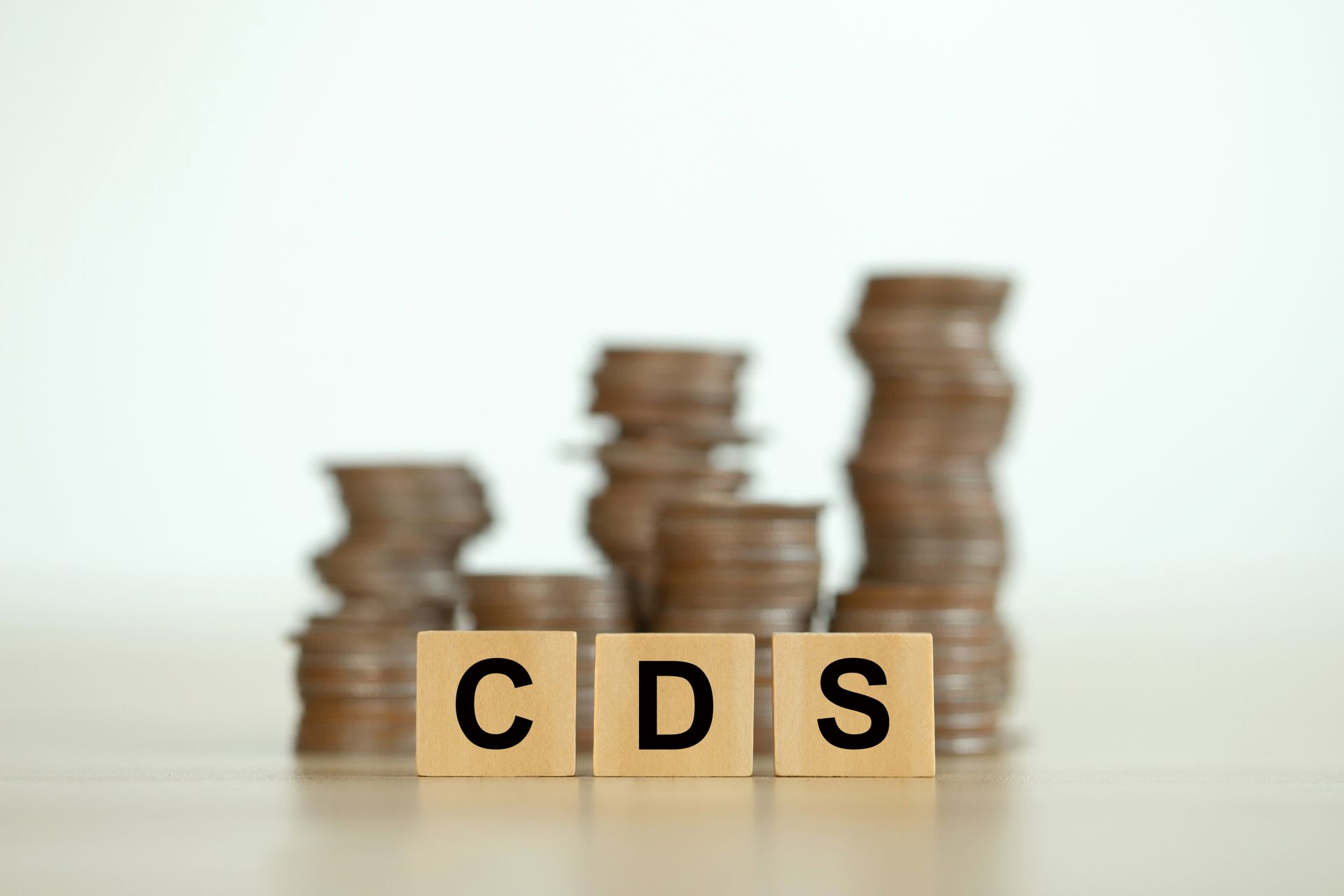Best 1-Year CD Rates July 2024
High-yield 1-year CDs are growing in popularity. We look at the options on the market.


CD rates have risen over the last two years in tandem with rising interest rates, as the Federal Reserve attempted to moderate inflation. But the central bank has taken its foot off the pedal lately, holding interest rates steady for the seventh time in a row. Because of this, CD rates have also been on the decline and will drop even further when the central bank cuts interest rates later this year.
However, if you look around you'll find many accounts are still offering impressive rates. In some cases, we've seen 1-year CDs with yields of well over 5%. Our tool, in partnership with Bankrate, will let you search for a good rate on an account that's right for you.
Why open a CD account?
A CD, or certificate of deposit, is a type of investment account that holds a fixed amount of money for a fixed term — which can be anywhere from one year to five years. The annual percentage yield (APY) on CD accounts is higher than rates for traditional savings accounts, helping you maximize your savings with minimal effort.
However, unlike typical savings accounts, you won't be able to withdraw cash from your account before the CD matures. If you do so, you'll have to pay an early withdrawal fee that can offset any interest you may have earned on the account (unless you open a no-penalty CD). For this reason, CDs aren’t a great place to park cash you plan on spending in the coming months, nor do they make good emergency funds. But if you're saving for an upcoming event or large purchase, like a car or wedding, a CD can be a great savings vehicle. And because your cash is essentially locked away in a CD account, your savings will earn a fixed APY — an added benefit if rates drop.
One of the best reasons to open a CD account is that it’s one of the safest places you can save your cash. This is because most CD accounts are FDIC- or NCUA-insured. The difference depends on whether you open an account with a bank (overseen by the FDIC) or credit union (regulated by NCUA). If your bank or credit union is faced with any financial trouble or closes, your deposits will be insured up to $250,000 per account (and up to $250,000 per person in a joint account). You can even use the FDIC BankFind tool to check whether a bank is federally insured.
Opening a CD is also a great option if you’re looking for a guaranteed rate of return on your savings. While CDs offer comparatively lower returns compared to higher-risk investment options, like stocks or ETFs, they’re a good choice if you value a fixed, predictable and safe return on your money.
Here are some 1-year CDs with rates 5% and higher
Paramount Bank
APY: 5.55% (11 months)
Minimum Deposit: $1,000
USAlliance Financial
APY: 5.40%
Minimum Deposit: $500
My eBanc
APY: 5.38%
Minimum Deposit: $50,000
CFG Bank
APY: 5.36%
Minimum Deposit: $500
NexBank
APY: 5.40%
Minimum Deposit: $25,000
TotalDirectBank
APY: 5.35%
Minimum Deposit: $25,000
Prime Alliance Bank
APY: 5.30%
Minimum Deposit: $500
Popular Direct
APY: 5.30%
Minimum Deposit: $10,000
Bask Bank
APY: 5.30%
Minimum Deposit: $1,000
Colorado Federal Savings Bank
APY: 5.30%
Minimum Deposit: $5,000
First Internet Bank
APY: 5.26%
Minimum Deposit: $1,000
Bread Financial
APY: 5.25%
Minimum Deposit: $1,500
Pros and cons of CDs
Pros
- CDs offer guaranteed returns on deposits
- Fixed rates on CDs mean that even if rates fall, the APY on your account will remain consistent
- Most CD accounts from banks and credit unions are federally insured for up to $250,000
- Since you can only withdraw funds when your CD account matures, you won't be tempted to spend your money elsewhere
Cons
- No liquidity; Accessing funds from a CD account isn't as easy as with a savings account. And if you need to withdraw funds from a CD account before the maturity date, you'll be charged a fee, which will likely offset any interest earned
- Money cannot be added to a CD once it has been opened
- CDs have a lower earnings potential compared to stocks or mutual funds
- Fixed rates on CDs also mean that if rates increase, you'll miss out on potential earnings
- Rates may not be high enough to outpace inflation
Bottom line
Since 2022, the Federal Reserve raised interest rates eleven times in an attempt to lower inflation, hiking the federal funds rate to its highest rate in over two decades. While these rate increases drove mortgage rates to record highs and pushed many into credit card delinquency, there was one silver lining. Rates on high-yield savings accounts and CDs also increased.
But once the Fed ended its rate-hiking campaign, CD rates began to decline. At the most recent policy-setting meeting, the Fed held interest rates steady once again, keeping the federal funds rate at a target range of 5.25% to 5.5%. Earlier this year, three interest rate cuts were projected by year-end, but due to higher-than-expected inflation, officials now estimate just one quarter-point cut for the year.
Because of this, now's a great time to lock in rates before they eventually fall later this year.
Related Content
Get Kiplinger Today newsletter — free
Profit and prosper with the best of Kiplinger's advice on investing, taxes, retirement, personal finance and much more. Delivered daily. Enter your email in the box and click Sign Me Up.

Erin pairs personal experience with research and is passionate about sharing personal finance advice with others. Previously, she was a freelancer focusing on the credit card side of finance, but has branched out since then to cover other aspects of personal finance. Erin is well-versed in traditional media with reporting, interviewing and research, as well as using graphic design and video and audio storytelling to share with her readers.
-
Project 2025 Tax Overhaul Blueprint: What You Need to Know
Tax Proposals Some people wonder what Project 2025 is and what it suggests for taxes.
By Kelley R. Taylor Last updated
-
 Four Steps to Secure Your Retirement Income
Four Steps to Secure Your Retirement IncomeInstead of relying on selling stock to fund your retirement, consider these actions to safeguard your retirement income.
By Cosmo P. DeStefano Published
-
 Softer June Jobs Report Raises Rate-Cut Bets
Softer June Jobs Report Raises Rate-Cut BetsJobs Report Slower hiring and a rise in the unemployment rate up the odds of the Fed easing more than once before year-end, experts say.
By Dan Burrows Published
-
Fed Holds Rates Steady, Sees Just One Cut This Year: What the Experts Are Saying
Federal Reserve The Federal Reserve kept interest rates unchanged and penciled in one quarter-point cut in 2024.
By Dan Burrows Published
-
May CPI Report Comes in Soft: What the Experts Are Saying About Inflation
CPI A slowdown in inflation keeps the Fed on track for rate cuts later this year.
By Dan Burrows Published
-
When Will the Fed Cut Rates? The Experts Weigh In
Federal Reserve The timing of the first quarter-point cut to the federal funds rate remains as opaque as ever.
By Dan Burrows Published
-
 May's Jobs Growth Blows Past Forecasts: What the Experts Are Saying
May's Jobs Growth Blows Past Forecasts: What the Experts Are SayingJobs Report A blowout jobs report and a bit of wage inflation means a Fed pivot towards easing will have to wait.
By Dan Burrows Published
-
April CPI Report Offers Some Relief: What the Experts Are Saying About Inflation
CPI CPI moderated last month, boosting hopes for interest rate cuts coming sooner rather than later.
By Dan Burrows Published
-
 Jobs Growth Slows in April: What the Experts Are Saying
Jobs Growth Slows in April: What the Experts Are SayingJobs Report Slower jobs growth and easing wage pressures are good news for rate cuts.
By Dan Burrows Published
-
Fed Holds Rates Steady at 23-Year High: What the Experts Are Saying
Federal Reserve The Federal Reserve struck a dovish pose even as it kept interest rates unchanged for a sixth straight meeting.
By Dan Burrows Published




